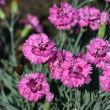You're shopping: DAVIDSONVILLE
(change store)
Departments - BLUEBERRY LOWBUSH 1G
BLUEBERRY LOWBUSH 1G
no reviews for this product. Login to place a review.
Your Price $14.00
Item Number 284173
In store quantity:
0
$14.00/ EA
Blueberry Lowbush
1-Gallon
Height: 1-2 feet tall.
Spread: 2-3 feet.
Sunlight: Full sun to partial shade.
Hardiness Zone: 3a.
Other Names: Vaccinium angustifolium, Wild Lowbush Blueberry
Description:
A hardy, native blueberry species known for its low-growing, spreading habit and intensely flavorful berries. Lowbush blueberries produce small, sweet, and aromatic fruit in mid to late summer. This cold-hardy variety is perfect for naturalized plantings, edible landscapes, and container gardens, offering both ornamental beauty and delicious fruit.
Edible Qualities:
Lowbush blueberries are prized for their intensely sweet flavor and high antioxidant content. The berries are smaller than highbush varieties but are packed with rich, wild blueberry taste.
The fruit is most often used in the following ways:
- Fresh Eating
- Baking
- Jams & Preserves
- Smoothies
- Freezing
Features & Attributes:
Lowbush blueberries feature delicate, dark green foliage that turns brilliant shades of red and orange in the fall. In spring, it produces small, bell-shaped white flowers that attract pollinators. Its spreading habit makes it ideal for ground cover, erosion control, and naturalized plantings.
This is a deciduous shrub with a low, spreading growth habit. It is self-pollinating but benefits from being planted near other blueberry varieties for increased yields.
Aside from its primary use as an edible, Blueberry Lowbush is suitable for the following landscape applications:
- Ground Cover
- Edible Landscaping
- Home Gardens
- Wildlife Gardens
Planting & Growing:
Blueberry Lowbush will grow to be about 1-2 feet tall at maturity, with a spread of 2-3 feet. It has a low canopy with a typical clearance of 6-12 inches from the ground. It grows at a slow to moderate rate and, under ideal conditions, can be expected to live for 30 years or more.
This shrub thrives in full sun to partial shade and well-drained, acidic soil. It requires consistent moisture, particularly during fruit development, and benefits from an annual layer of mulch to retain soil moisture and regulate temperature. Light pruning after fruiting helps maintain plant health and productivity.
Additional Characteristics:
- Mid to Late Season Ripening
- Self-Pollinating (Improved Yields with Cross-Pollination)
- High-Yielding
- Cold Hardy
- Excellent Fall Foliage Color

